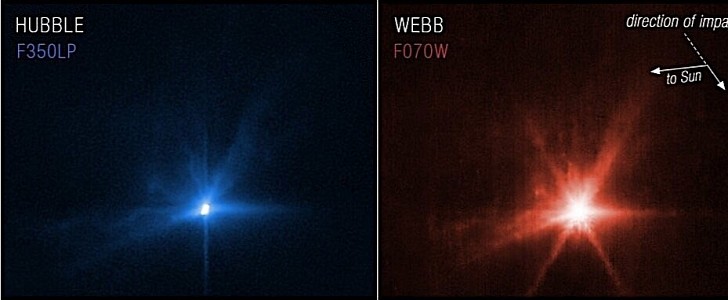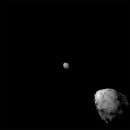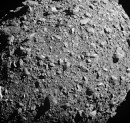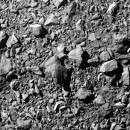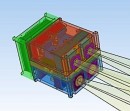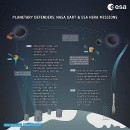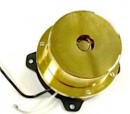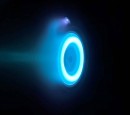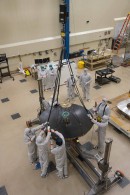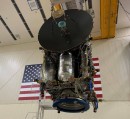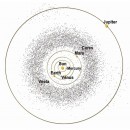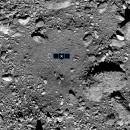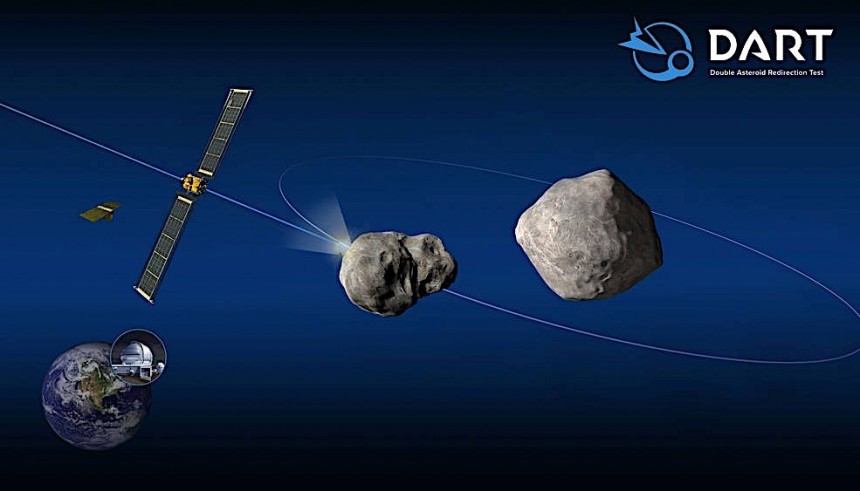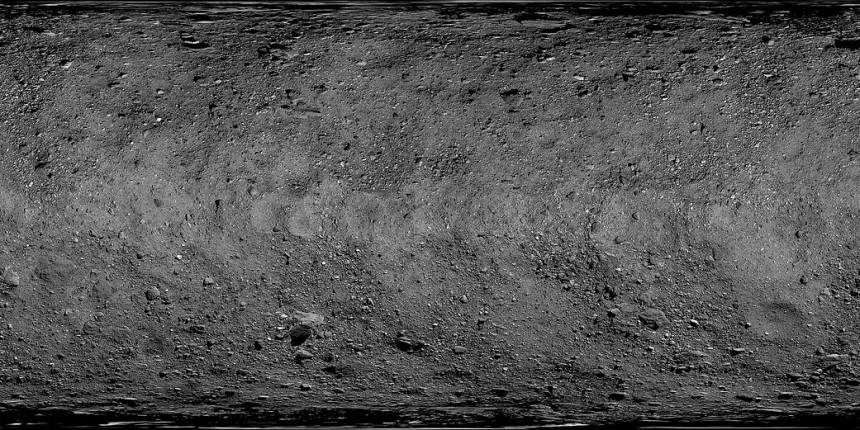Until the 21st century, humanity's capability to defend itself against asteroids, comets, and other nefarious space junk was to make some cheesy Hollywood disaster movies to pre-instill a healthy sense of panic.
There have been hiccups along the way, but NASA's Double Asteroid Redirection Test (DART) mission finally managed to impose the will of the human race upon another heavenly body called (65803) Didymos I Dimorphos. Or just Dimorphos, as people mercifully shorten it.
Hitching a ride aboard a SpaceX Falcon 9 booster in November 2021, it took less than a full year for the 610 kilogram (1,340 lb) space probe to impact one-half of the binary minor-planet system flanked by its partner body 65803 Didymos. By 2026, a European Space Agency probe called Hera will visit the system to survey the damage.
The binary minor planet travels in a peculiar orbit from just outside the Earth's orbit to beyond that of Mars and the greater Asteroid Belt, making it one of the most opportunistic targets for exploration by space probes. Approximately 285 hours after the intentional collision, images taken by the Hubble Space Telescope showed a bright and very noticeable debris cloud hanging over and behind Dimorphos even well over a week afterward.
To top it all off, NASA announced DART's impact did indeed alter the Dimmorphos' orbit. Shortening its transit around its parent body from 11 hours and 55 minutes to 11 hours and 23 minutes. Considering NASA was going to call the mission a success if the orbit changed more than a minute or so, a nearly 25-fold better result is nothing short of astonishing. It's all the more exciting when you understand how hard it's historically been to send space probes to minor planetary bodies.
Mankind's first interaction with what we'd now classify as a minor planet came completely by accident in March 1972, thanks to the Pioneer 10 en route to its close approach to the Jupiter system. There were several more incidental minor planet encounters after the fact. But several missions that tried to either land on, impact, or return samples from these mysterious bodies failed and have always been fraught with difficulties.
Even the famous NEAR Shoemaker mission, which became the first space probe ever to land on the surface of an asteroid, failed to enter orbit around the 433 Eros S-type asteroid. What could have been a complete mission loss turned into a historical achievement when an alternative orbit was arranged, followed by a go-ahead to land. The Japanese Hayabusa mission to the asteroid 25143 Itokawa became a partial failure when its MINERVA lander module failed to latch on.
The probe itself managed to land on the asteroid and return granular samples back to Earth in a world-first achievement. Albeit, it wasn't nearly as much material as was hoped. A sort of predecessor NASA mission to DART called Deep Impact lost communication with mission control a full eight and a half years after its launch due to what can only be described as a Y2K-like computer glitch in 2013. All after a successful collision of the probe's impactor module with the comet Temple 1 in 2005 produced a dust cloud so massive it obscured the view of the probe's sensors.
Though Temple 1 was a comet and therefore not a minor planet object, Deep Impact's danger-ridden mission showed how even by rocket science standards, asteroid impact or sample return missions beyond the Earth-Moon system are some of the most difficult to pull off. So when DART managed to pass with flying colors, it genuinely signaled a new era for humanity. One where human beings can manipulate profoundly the cosmos around them, not the other way around.
Hitching a ride aboard a SpaceX Falcon 9 booster in November 2021, it took less than a full year for the 610 kilogram (1,340 lb) space probe to impact one-half of the binary minor-planet system flanked by its partner body 65803 Didymos. By 2026, a European Space Agency probe called Hera will visit the system to survey the damage.
The binary minor planet travels in a peculiar orbit from just outside the Earth's orbit to beyond that of Mars and the greater Asteroid Belt, making it one of the most opportunistic targets for exploration by space probes. Approximately 285 hours after the intentional collision, images taken by the Hubble Space Telescope showed a bright and very noticeable debris cloud hanging over and behind Dimorphos even well over a week afterward.
Mankind's first interaction with what we'd now classify as a minor planet came completely by accident in March 1972, thanks to the Pioneer 10 en route to its close approach to the Jupiter system. There were several more incidental minor planet encounters after the fact. But several missions that tried to either land on, impact, or return samples from these mysterious bodies failed and have always been fraught with difficulties.
Even the famous NEAR Shoemaker mission, which became the first space probe ever to land on the surface of an asteroid, failed to enter orbit around the 433 Eros S-type asteroid. What could have been a complete mission loss turned into a historical achievement when an alternative orbit was arranged, followed by a go-ahead to land. The Japanese Hayabusa mission to the asteroid 25143 Itokawa became a partial failure when its MINERVA lander module failed to latch on.
Though Temple 1 was a comet and therefore not a minor planet object, Deep Impact's danger-ridden mission showed how even by rocket science standards, asteroid impact or sample return missions beyond the Earth-Moon system are some of the most difficult to pull off. So when DART managed to pass with flying colors, it genuinely signaled a new era for humanity. One where human beings can manipulate profoundly the cosmos around them, not the other way around.
